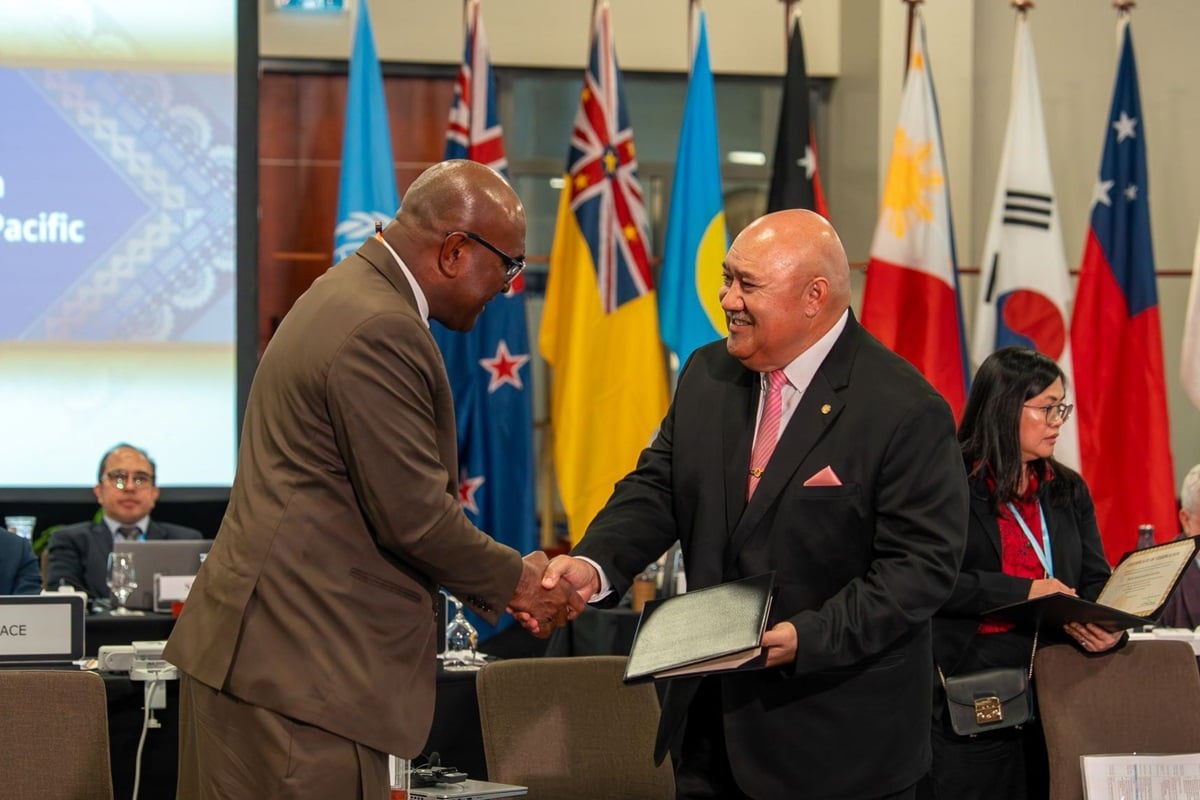Fiji Achieves Landmark Public Health Milestone in Alignment with Sustainable Development Goals
Introduction: A Victory for Global Health and Sustainable Development
The World Health Organization (WHO) has officially validated the Republic of Fiji for eliminating trachoma as a public health problem. This significant achievement marks a critical step forward in public health and demonstrates a profound commitment to the United Nations Sustainable Development Goals (SDGs), particularly SDG 3 (Good Health and Well-being). Trachoma, a neglected tropical disease (NTD) and the world’s leading infectious cause of blindness, is intrinsically linked to conditions of poverty and inadequate sanitation, making its elimination a multi-faceted victory for sustainable development.
Fiji is now the 26th country globally to achieve this milestone and the 58th country to eliminate at least one NTD, contributing to the global targets outlined in the WHO’s road map for neglected tropical diseases 2021–2030.
Trachoma Elimination: A Multi-Sectoral Approach Aligned with the SDGs
Addressing the Root Causes of Trachoma
Trachoma, caused by the bacterium Chlamydia trachomatis, thrives in communities with limited access to essential services. Its elimination is therefore not just a health outcome but a reflection of progress across several development areas.
- SDG 3 (Good Health and Well-being): The primary achievement is the direct contribution to Target 3.3, which calls for an end to the epidemics of NTDs by 2030. By eliminating the suffering and risk of blindness caused by trachoma, Fiji has protected the health of its future generations.
- SDG 6 (Clean Water and Sanitation): The disease spreads through contact and in environments with poor sanitation. Fiji’s success was built upon integrated initiatives that improved access to clean water and sanitation, directly addressing the core targets of SDG 6.
- SDG 1 (No Poverty): NTDs are diseases of poverty. By eradicating a condition that can lead to disability and loss of income, Fiji is helping to break the cycle of poverty and enhance economic well-being for its most vulnerable citizens.
Fiji’s Strategic Framework for Elimination
Fiji’s journey to elimination began with renewed concern in the 2000s, leading to a comprehensive, evidence-based programme launched by the Ministry of Health and Medical Services. The strategy since 2012 has been a model of integrated public health action.
- Robust Surveillance and Data Collection: Fiji conducted a series of internationally supported, population-based prevalence surveys and laboratory tests to accurately assess the epidemiology of the disease.
- Integrated Health Initiatives: The trachoma programme was integrated with existing public health platforms, including school health programmes. This approach aligns with SDG 4 (Quality Education) by ensuring children remain healthy and able to attend school.
- Community Engagement and Awareness: Public awareness campaigns were crucial to promoting hygiene practices and securing community buy-in for the elimination efforts.
- Cross-Sectoral Collaboration: The success reflects years of coordinated action across health facilities, villages, and regional platforms, demonstrating the power of SDG 17 (Partnerships for the Goals). The collaboration between the Fijian government, WHO, and other global and local partners was essential.
Global and Regional Implications for the 2030 Agenda
A Beacon for the Pacific Region
Fiji’s achievement serves as an inspiration for other nations in the Western Pacific and beyond. It underscores that eliminating NTDs is an attainable goal when there is sustained political will, investment, and strong partnerships. This success contributes to reducing regional health disparities, a key tenet of SDG 10 (Reduced Inequalities).
Within the WHO Western Pacific Region, Fiji joins five other nations—Cambodia, China, the Lao People’s Democratic Republic, Papua New Guinea, and Vanuatu—that have successfully eliminated trachoma. This collective progress reinforces the regional commitment to the WHO’s 2030 road map and the overarching principle of the SDGs to “leave no one behind.” The Honourable Dr Ratu Atonio Rabici Lalabalavu, Minister of Health and Medical Services of Fiji, highlighted this as a “defining moment for health equity in the Pacific,” calling for continued partner support to accelerate action against other NTDs across the region.
Analysis of SDGs, Targets, and Indicators
1. Which SDGs are addressed or connected to the issues highlighted in the article?
-
SDG 3: Good Health and Well-being
- The article’s central theme is the elimination of trachoma, a neglected tropical disease (NTD) and the “world’s leading infectious cause of blindness.” This is a “landmark public health achievement” that directly contributes to ensuring healthy lives and promoting well-being for the people of Fiji.
-
SDG 6: Clean Water and Sanitation
- The article explicitly states that trachoma “remains endemic in many vulnerable communities where access to clean water and sanitation is limited.” It also highlights that Fiji’s successful elimination effort was “integrated with… water and sanitation initiatives,” linking the disease’s prevention and elimination to improvements in this sector.
-
SDG 17: Partnerships for the Goals
- The article repeatedly emphasizes the crucial role of collaboration. It mentions Fiji’s success was achieved through a “network of global and local partners,” the unity of “communities, governments, and partners,” and “internationally supported surveys.” The call for continued support from “donors and partners” further underscores the importance of partnerships.
2. What specific targets under those SDGs can be identified based on the article’s content?
-
Target 3.3: End the epidemics of… communicable diseases
- This target aims to end the epidemics of AIDS, tuberculosis, malaria, and neglected tropical diseases by 2030. The article is entirely focused on Fiji’s successful elimination of trachoma, which is explicitly identified as a “neglected tropical disease (NTD).” The WHO’s validation confirms Fiji has met the criteria for eliminating this specific communicable disease as a public health problem.
-
Target 6.2: Achieve access to adequate and equitable sanitation and hygiene for all
- This target focuses on ending open defecation and providing access to sanitation and hygiene. The article links the spread of trachoma to a lack of clean water and sanitation. Fiji’s successful strategy included integrating their health program with “water and sanitation initiatives,” indicating that progress toward this target was a key component of their achievement.
-
Target 17.16: Enhance the Global Partnership for Sustainable Development
- This target emphasizes multi-stakeholder partnerships that mobilize and share knowledge, expertise, technology, and financial resources. The article provides a clear example of this in action, describing how “Fiji and its network of global and local partners” and “communities, governments, and partners” united to achieve the elimination of trachoma, with support from international bodies like the WHO.
3. Are there any indicators mentioned or implied in the article that can be used to measure progress towards the identified targets?
-
Indicator for Target 3.3 (Implied): Number of people requiring interventions against neglected tropical diseases (Indicator 3.3.5)
- While the article does not give specific numbers, the core announcement that Fiji has “eliminated trachoma as a public health problem” implies that the number of people requiring interventions for this disease has fallen below a specific threshold defined by the WHO. The statement that “Fiji is the 26th country to eliminate trachoma” serves as a qualitative indicator of national and global progress against NTDs.
-
Indicator for Target 6.2 (Implied): Proportion of population using safely managed sanitation services and hand-washing facilities (Indicator 6.2.1)
- The article does not provide quantitative data for this indicator. However, it implies progress by stating that the elimination effort was “integrated with school health, water and sanitation initiatives.” This suggests that improvements in sanitation and hygiene practices were a measured component of the overall strategy to stop the spread of the disease.
-
Indicator for Target 17.16 (Implied): Effectiveness of multi-stakeholder partnerships
- The article serves as a case study demonstrating the effectiveness of such partnerships. The validation by the WHO is a direct result and an implicit indicator of a successful collaboration between the Fijian Ministry of Health, local communities, and international partners. The achievement itself—”Fiji’s success in eliminating trachoma is a beacon of what’s possible when communities, governments, and partners unite”—is the primary indicator of the partnership’s success.
SDGs, Targets, and Indicators Table
| SDGs, Targets and Indicators | Corresponding Targets | Specific Indicators Identified in the Article |
|---|---|---|
| SDG 3: Good Health and Well-being | Target 3.3: By 2030, end the epidemics of AIDS, tuberculosis, malaria and neglected tropical diseases and combat hepatitis, water-borne diseases and other communicable diseases. | Implied Indicator (related to 3.3.5): The number of countries validated for eliminating a specific NTD. The article states, “Fiji is the 26th country to eliminate trachoma as a public health problem.” |
| SDG 6: Clean Water and Sanitation | Target 6.2: By 2030, achieve access to adequate and equitable sanitation and hygiene for all and end open defecation, paying special attention to the needs of women and girls and those in vulnerable situations. | Implied Indicator: Integration of water and sanitation initiatives into public health programs. The article notes that Fiji’s effort was “integrated with… water and sanitation initiatives.” |
| SDG 17: Partnerships for the Goals | Target 17.16: Enhance the Global Partnership for Sustainable Development, complemented by multi-stakeholder partnerships that mobilize and share knowledge, expertise, technology and financial resources. | Implied Indicator: Successful public health outcomes achieved through collaboration. The article attributes success to the unity of “communities, governments, and partners” and support from a “network of global and local partners.” |
Source: who.int







